Occupational environment monitoring at the factory producing asphalt
99,000 ₫
Note: The above price is calculated for one sample. Prices may fluctuate depending on the area of the environment to be monitored and market conditions. For more accurate pricing support, please refer to the price list or contact our consulting staff directly.
Workplace environment monitoring for an asphalt manufacturing factory is a session of collecting, analyzing, and evaluating factors at the workplace that may be harmful to workers’ health.
Table of Contents
Toggle1. Overview of Asphalt Production Factories
a. What is an asphalt production factory?
A production factory for asphalt is an industrial facility designed to produce and manufacture asphalt. Asphalt is a material widely used in road construction and maintenance. During production, asphalt is created by combining primary materials such as bitumen (binder), aggregates (usually mineral crystals and organic composites), and additives such as elastomers, ultraviolet inhibitors, and anti-aging agents.
Asphalt production factories may apply different technologies and production processes depending on the scale and requirements of the project. The machinery and equipment used in the factory include but are not limited to mixing systems, asphalt mixers, heating devices, filters, temperature control systems, and other equipment related to asphalt production.

b. Production stages in an asphalt production factory
Production stages in an asphalt production factory may include:
- Raw material preparation: Collecting, selecting, and preparing main materials such as bitumen and aggregates.
- Heating and filtering: Bitumen is heated in equipment to melt and remove impurities. Then, bitumen is filtered to eliminate unwanted base materials and crystals.
- Mixing: Aggregates and bitumen are combined to form the asphalt mixture. Mixing may use shaft mixers or centrifugal mixers to ensure uniform blending and achieve the desired asphalt quality.
- Temperature and quality control: Controlling the temperature and quality of the asphalt mixture is crucial to ensure the final product meets technical requirements and quality standards.
- Packaging and dispatch: After production, asphalt is packaged and transported to supply construction and road maintenance projects.

c. Machinery used in asphalt production factories
Several key types of machinery are used in asphalt production factories. Some commonly used machines include:
- Asphalt mixing factory: The main machinery used for mixing and producing asphalt. There are various versions such as stationary, mobile, and continuous mixing factories. It is used to combine aggregates and bitumen to create the asphalt mixture.
- Bitumen dryer and filter: This machine is used to heat and filter bitumen before it is used in the mixing process, removing impurities and unwanted crystals to ensure product quality.
- Asphalt paver: Used to lay a thin layer of asphalt on road surfaces or other construction surfaces, ensuring even and smooth distribution.
- Roller (Compactor): A type of compaction machine used to compress and smooth the asphalt layer after it is laid, creating a firm and smooth road surface.
- Flow meters and quality control equipment: Used to measure asphalt and other components during production, helping control both quantity and quality of the asphalt mixture.

d. Occupational diseases for workers in asphalt production factories
Workers in asphalt production factories may be exposed to harmful environmental factors that can cause health issues and occupational diseases. Common occupational diseases in asphalt production include:
- Respiratory diseases: Prolonged exposure to smoke, fumes, and dust from asphalt production may lead to bronchitis, pneumonia, asthma, and other respiratory issues.
- Skin diseases: Contact with asphalt mixtures may cause skin irritation, dermatitis, bleeding, and other skin problems. Chemicals in asphalt may also cause skin damage.
- Digestive issues: Exposure to chemical compounds during asphalt production can cause digestive problems, such as gastritis, enteritis, and other gastrointestinal disorders.
- Cardiovascular diseases: Chemicals in asphalt production may negatively affect the cardiovascular system, causing high blood pressure, chest pain, and increasing the risk of stroke.
- Cancer: Some chemicals in asphalt, such as benzene and arsenic compounds, may be carcinogenic. Prolonged exposure can increase the risk of lung, skin, and gastrointestinal cancers.
To protect workers’ health, occupational safety and environmental protection measures should be implemented in asphalt production factories, including the use of personal protective equipment, ensuring safe work procedures, providing occupational safety and health training, and complying with relevant regulations and standards.

e. Common types of asphalt on the market
There are various common types of asphalt available, including:
- Cationic asphalt: Formulated with cationic agents to improve adhesion and water resistance. This type is commonly used in road construction.
- Modified polymer asphalt: Created by combining cationic asphalt with modified polymers such as Styrene-Butadiene Rubber (SBR) or tropical rubber. It offers heat resistance, crack resistance, and extended surface durability.
- Superpave asphalt: Produced using the Superpave (Superior Performing Asphalt Pavements) technology to meet high heat resistance, crack resistance, and durability standards, often used for heavy-load roads.
- Hot mix asphalt: Manufactured and transported at high temperatures to maintain its molten state. Once laid on the road surface, it cools and solidifies to form the pavement layer.
- Cold mix asphalt: Produced and transported at lower temperatures than hot mix asphalt, typically used in cold weather or when high-temperature facilities are unavailable.
- Specialty asphalt: Includes asphalt for special purposes such as fire-resistant, skid-resistant, or industrial-grade asphalt.
2. Overview of occupational environment monitoring services
a. What is occupational environment monitoring in asphalt production factories?
Occupational environment monitoring (or workplace environmental assessment) in asphalt production factories involves collecting, evaluating, and analyzing measurement indicators of workplace environmental factors. This aims to implement timely measures to minimize environmental hazards to worker health and prevent occupational diseases. Monitoring is mandatory for all asphalt production factories.
Workplace monitoring is essential for protecting and improving worker health, as workers are the primary resource generating direct profit for the enterprise. Continuous exposure to excessive occupational hazards can negatively impact health and lead to occupational diseases.
REGISTER FOR OCCUPATIONAL ENVIRONMENT MONITORING SERVICE
b. Nam Toan Viet’s occupational environment monitoring program
Nam Toan Viet’s occupational environment monitoring program is developed by monitoring engineers specializing in occupational safety and environmental protection. Aiming to ensure worker safety and health, the program employs modern measurement methods to monitor air, water, and microclimate, physical factors, dust, and other workplace conditions. This program plays a critical role in maintaining a safe work environment and protecting worker health.
Furthermore, the program contributes to researching and developing new solutions to improve workplace environmental quality. With the dedication and professionalism of Nam Toan Viet’s monitoring experts, the exclusive monitoring program represents a breakthrough in occupational safety and environmental management in Vietnam.

c. Standardization in workplace measurement procedures
Standardization in Nam Toan Viet’s workplace measurement procedures is crucial to ensuring data accuracy and reliability. The program follows standards and standardized procedures recognized by the Ho Chi Minh City Department of Health, ensuring that collected data can be reliably used for workplace assessments and decision-making to improve occupational safety and health.
These standardized procedures ensure that measurements are conducted by highly qualified monitoring specialists with years of experience, allowing managers and experts to trust results from An Toan Nam Viet and make precise, informed decisions for worker and environmental protection.
By applying standardized procedures, Nam Toan Viet demonstrates its commitment to providing a safe working environment and protecting workers’ health, contributing positively to improving occupational safety management and environmental protection in Vietnam.
d. Reporting monitoring results for asphalt production factories
Monitoring results are prepared according to Form No. 04, Appendix III, issued with Decree 44/2016/ND-CP and compiled into two copies: one sent to the workplace that signed the monitoring contract, and one retained by the monitoring organization.
The retention period for monitoring results follows legal requirements and records are stored indefinitely.

e. Frequency of occupational environment monitoring as required by law
According to Clause 2 of Article 18 of the Law on Occupational Safety and Hygiene 84/2015/QH13, employers must conduct workplace monitoring to evaluate harmful factors at least once per year.
f. Deadline for submitting occupational environment monitoring reports
The deadline for submitting reports is before December 31 each year. Enterprises at production factories must submit their monitoring results to the Department of Health in the locality where the factory is headquartered and where workers are employed.
When there are changes in technology, production processes, or factory upgrades that may introduce new hazardous factors to workers’ health, enterprises must update occupational hygiene records related to harmful factors requiring workplace monitoring.
g. Penalties for violations of occupational environment monitoring regulations for employers
According to Article 27 of Decree No. 12/2022/ND-CP dated January 17, 2022, on administrative penalties in labor, social insurance, and Vietnamese workers working abroad under contract:
- Clause 2: Fines ranging from 2,000,000 – 5,000,000 VND for employers who fail to publicly inform workers at the monitoring site and at the workplace immediately after receiving monitoring results and evaluation of hazardous factors.
- Clause 3: Fines ranging from 20,000,000 – 40,000,000 VND for employers who fail to conduct occupational environment monitoring to control health hazards as required by law.
- Clause 4: Fines ranging from 40,000,000 – 60,000,000 VND for employers who collude with monitoring organizations to commit fraud in monitoring activities but not to the extent of criminal liability.
3. Harmful environmental factors for workers in asphalt manufacturing factories
Workers in asphalt manufacturing factories may be exposed to the following harmful environmental factors:
- Smoke and toxic fumes: During asphalt production, smoke and toxic fumes may be generated from melting and distilling asphalt components. Fumes such as sulfuric acid, formaldehyde, and volatile organic compounds can irritate the eyes, throat, lungs, and skin.
- Dust: Handling and transporting asphalt components can produce fine dust. Prolonged exposure to asphalt dust can irritate the respiratory tract and cause lung obstruction.
- Noise: Machinery and equipment in asphalt factories generate high levels of noise. Continuous exposure can cause stress, insomnia, and damage to workers’ hearing.
- Temperature and pressure: Asphalt production often involves high temperatures and high pressures. Workers may be at risk from inappropriate temperature and pressure, resulting in burns, explosions, and other health issues.
- Chemicals: Asphalt production requires the use of chemicals such as anti-adhesives, additives, and solvents. Long-term exposure can cause skin irritation, allergies, and other health problems.
- Poor working environment: Asphalt factories often have challenging working conditions, such as confined spaces, limited natural light, and poor ventilation. These conditions can make breathing difficult, cause discomfort, and affect health and work performance.
REGISTER FOR OCCUPATIONAL ENVIRONMENT MONITORING SERVICE
4. Measures to improve working conditions in asphalt manufacturing factories
To improve working conditions in asphalt manufacturing factories, the following measures can be applied:
- Management and reduction of smoke and toxic fumes: Ensure effective smoke and fume treatment systems, such as exhaust systems and gas collection and treatment systems. Use filters and pollution control devices to minimize the release of smoke and fumes into the air.
- Dust control: Ensure dust collection and air filtration systems are functioning properly to minimize dust dispersion during production. Apply dust-reducing measures such as dust barriers and technologies that reduce dust generation during handling and transportation.
- Noise safety: Install noise-reducing measures such as soundproofing and vibration dampening for noisy equipment and machinery. Provide hearing protection equipment for employees working in noisy environments.
- Temperature and pressure management: Ensure effective cooling and temperature control systems in the factory to reduce risks of burns and explosions. Apply safety measures when working with high-temperature and high-pressure equipment.
- Training and guidance: Provide comprehensive training and instructions for employees on safety procedures, personal protective equipment usage, and occupational disease prevention. Ensure employees understand and comply with safety regulations and procedures.
- Work environment improvement: Ensure spacious, well-ventilated, and naturally lit working areas. Improve ventilation and air filtration systems to reduce pollution and provide clean air.
- Periodically conduct occupational environment monitoring in factories, collect and analyze harmful factors affecting workers, and adjust to reduce hazards to prevent occupational diseases.
5. Benefits of periodic monitoring in asphalt manufacturing factories
An Toan Nam Viet provides businesses with significant benefits when using occupational environment monitoring services in accordance with Decree 44/2016/ND-CP on managing and controlling harmful workplace factors affecting employees.
- Businesses can proactively control harmful factors in workshops or factories.
- Receive consultation and recommendations on measures to reduce harmful factors and improve workplace environment quality.
- Indirectly protect human resources, a key factor in business development.
- Reduce the harmful effects of occupational diseases on health, thereby minimizing future treatment costs.
- Enhance worker health, ensuring product quality and maintaining production output.
- Ensure compliance with labor safety laws, avoiding legal risks.
- Enhance credibility and professionalism in all aspects, thereby elevating the company’s brand.
Nam Viet’s environmental monitoring service is a solution to reduce occupational disease risks, contributing to a clean and high-quality working environment.

6. National occupational environment monitoring center
Occupational environment monitoring center of Nam Viet is a professional unit specializing in monitoring and measuring workplace environmental quality across all provinces in Vietnam. With a team of experienced monitoring specialists, the center uses modern measurement equipment to ensure accuracy and reliability.
Besides monitoring services, the center assists clients in planning, managing, and tracking occupational environmental issues. With the motto “customer-centered,” the center prioritizes client satisfaction, meets all client needs, and commits to providing the best solutions for businesses.
REGISTER FOR OCCUPATIONAL ENVIRONMENT MONITORING SERVICE
With investments in technology, equipment, and human resources, Nam Viet’s monitoring center has become one of the most reputable units in occupational environment monitoring in Ho Chi Minh City, with the following objectives:
- We always value our brand reputation and the quality of our service products.
- We provide clients with the best and most suitable solutions possible.
- With a team of experienced Masters and Engineers, committed to environmental protection and benefiting businesses.
- By choosing Nam Viet Environmental Monitoring, companies receive professional service from experts and the best cost advantages.
The occupational environment monitoring process at Nam Viet includes the following basic steps:
- Before monitoring, we ensure all equipment is calibrated according to legal regulations.
- Follow occupational environment monitoring procedures committed to the Department of Health accurately and fully.
- Report monitoring results honestly to employers.
- If monitoring results indicate unsafe conditions, Nam Viet provides corrective solutions, and the workplace implements the following:
- Implement measures to improve working conditions, minimize harmful factor impacts, and prevent occupational diseases.
- Conduct health examinations to detect occupational and related diseases early for workers in unsafe environments.
- Provide in-kind compensation to workers according to labor law.

7. Occupational environment monitoring quotation
To help businesses conduct professional and effective occupational environment monitoring, Nam Viet provides clients with a quotation for occupational environment monitoring services that is high-quality and reasonably priced.
- Our quotation provides detailed pricing information for the monitoring services we offer, including costs related to travel, measurement, analysis, and reporting. Clients can trust the accuracy and reliability of the monitoring reports we provide.
- We commit to offering competitive and reasonable prices in the market and are always ready to provide quick and professional advice for any inquiries regarding monitoring services.
- With Nam Viet’s monitoring quotation, clients can easily select service packages suitable to their needs. We are committed to delivering the highest satisfaction with professional service quality.
No comments yet

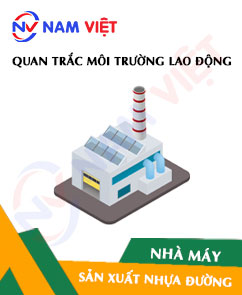
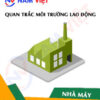
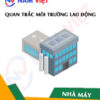


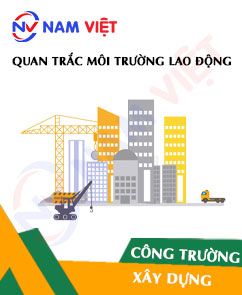
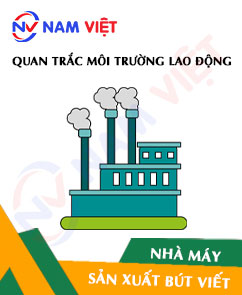

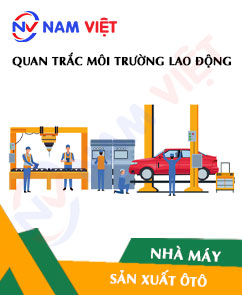


Review Occupational environment monitoring at the factory producing asphalt
There are no reviews yet.